Choosing the right business model is perhaps the most critical decision you’ll make when starting an online store. Two popular contenders often rise to the top of the list: dropshipping and private labeling.
Both offer distinct advantages and disadvantages, and understanding the core differences between dropshipping and private label is essential for setting realistic expectations and building a sustainable business.
But what exactly are these models, how do they stack up against each other, and how do you get started with each?
Let’s dive deep into the world of dropshipping vs private label to help you determine which path might be the best fit for your entrepreneurial journey.
What is Dropshipping?

Dropshipping is a retail fulfillment method where a store doesn’t keep the products it sells in stock.
Instead, when a store sells a product using the dropshipping model, it purchases the item directly from a third party (a supplier or manufacturer) who then ships the product directly to the customer.
Key Characteristics of Dropshipping:
- No Inventory: You don’t buy or store inventory upfront.
- Low Startup Costs: Minimal capital is needed to get started, primarily for website development and marketing.
- Wide Product Selection: You can offer a vast range of products without purchasing them.
- Supplier Handles Shipping: The supplier manages packing and shipping logistics.
Pros of Dropshipping:
- Accessibility: Very easy to start, low financial barrier to entry.
- Flexibility: Operate from anywhere with an internet connection.
- Reduced Risk: No risk of holding unsold inventory.
- Scalability (relative): Easy to add or remove products based on market demand.
Cons of Dropshipping:
- Lower Profit Margins: Suppliers take a cut, leading to smaller margins compared to other models.
- Lack of Brand Control: You don’t control packaging, quality control, or often the customer experience (shipping speed, returns).
- Inventory Issues: Relying on supplier stock means you might sell items that are out of stock.
- Supplier Reliability: Quality can vary, and a poor supplier reflects badly on your store.
- Shipping Complexities: Multiple suppliers can mean inconsistent shipping times and costs for a single order.
What is Private Labeling?

Private labeling involves creating your own brand name and logo to sell products that are manufactured by a third-party supplier or manufacturer.
You work with a manufacturer to produce goods specifically for your brand, often customizing them to some degree (design, packaging, formulation).
For the core comparison of dropshipping vs private label, private label generally implies a higher degree of brand ownership and product involvement than dropshipping.
Key Characteristics of Private Labeling:
- Brand Ownership: You create and own your brand identity.
- Product Control: You have more control over product quality, design, and features.
- Inventory Management: You purchase and hold inventory (or use fulfillment centers).
- Higher Potential Margins: Cutting out intermediaries can lead to better profitability.
Pros of Private Labeling:
- Strong Branding: Build a recognizable and valuable brand asset.
- Higher Profit Margins: Potential for greater control over pricing and costs.
- Quality Control: Ability to ensure product quality meets your standards.
- Customer Loyalty: Build a loyal customer base around your unique brand.
- Differentiation: Offer unique products that aren’t available elsewhere.
Cons of Private Labeling:
- Higher Startup Costs: Requires significant investment in product development, manufacturing, and inventory.
- Inventory Risk: Risk of unsold stock tying up capital.
- More Complex Logistics: You are responsible for manufacturing, shipping to warehousing, and potentially fulfillment (though fulfillment centers can handle the latter).
- Time Commitment: Finding suppliers, developing products, and managing inventory is time-consuming.
- Scaling Requires Capital: Growing often means investing more in inventory.
Key Differences: Dropshipping vs Private Label
Let’s break down the core distinctions when comparing dropshipping vs private label across critical business aspects:
| Feature | Dropshipping | Private Labeling |
| Similarities | Both are e-commerce models selling physical goods online; require marketing/sales efforts; involve working with suppliers/manufacturers. | |
| Inventory | No inventory held | Buy and hold inventory |
| Startup Cost | Very low | High |
| Brand Control | Minimal to None (logo on store, not product/packaging) | Full Control |
| Product Control | None (sell existing generic products) | High (design, quality, features) |
| Profit Margin | Lower (due to supplier markup) | Higher Potential (control over manufacturing cost) |
| Risk | Low (no inventory risk, low financial entry) | High (inventory risk, development risk, higher investment) |
| Scalability | Easier initially, challenging for profit growth | Requires more capital, higher profit scaling potential |
| Shipping/Fulfillment | Handled by supplier (in their packaging) | Handled by brand (or 3PL, with branded packaging) |
| Uniqueness | Selling identical products to competitors | Selling unique or differentiated products |
| Time Investment | Lower initially, focuses on marketing | Higher initially (sourcing, development), ongoing mgmt |
This direct comparison highlights that the choice between dropshipping vs private label fundamentally comes down to risk tolerance, available capital, and long-term business goals, especially concerning brand building and product differentiation.
Private Label vs. White Label

While discussing private label and dropshipping, you’ll often encounter the term “white label.” Understanding the distinction is crucial.
White Label
White labeling involves a manufacturer creating a generic, unbranded product that they sell in bulk to multiple retailers.
These retailers can then take the same product and put their brand name and logo on it.
Essentially, the product itself is standardized and not unique to any single brand; the only thing differentiating it is the branding applied by the retailer.
Think of common items like basic phone cases, t-shirts, or supplements, where the underlying product is identical across many brands.
How is White Label Different from Private Label?
The key difference lies in the level of customization and ownership of the product itself:
White Label: You are simply rebranding a generic product that many others are also selling. You have little to no control over the product’s design, features, materials, or formulation. Your differentiation comes solely from your marketing and branding applied to the product or its packaging.
Private Label: You are involved in the creation or customization of a product specifically for your brand. This means working with the manufacturer to develop unique features, choose specific materials, modify designs, or even create proprietary formulas. Your product is unique to your brand and not available under other brand names in the exact same form.
In summary, white label is about putting your brand on a standard product, while private label is about creating or customizing a product that is unique to your brand.
When comparing dropshipping vs private label, private label typically implies this deeper product involvement, whereas dropshipping often involves selling either generic white-label products or standard branded goods from other companies (which you wouldn’t be rebranding yourself).
Which Model is Right for You? Dropshipping vs Private Label Decision
Deciding between dropshipping vs private label depends heavily on your specific situation:
Choose Dropshipping If:
- You have limited capital.
- You want to start quickly and test various niches or products.
- You are comfortable with lower margins initially.
- Your primary focus is on marketing and sales, not product development or logistics.
- You want to minimize financial risk.
Choose Private Labeling If:
- You have significant capital to invest.
- You are committed to building a strong, differentiated brand.
- You want control over product quality and customer experience.
- You are aiming for higher profit margins in the long run.
- You are willing to manage manufacturing and inventory logistics.
- You have a unique product idea or a way to improve existing products.
While the primary debate often revolves around dropshipping vs private label, it’s also important to be aware of other models like Print on Demand (POD).
If custom products and hands-off fulfillment appeal to you, you might find our in-depth look at dropshipping vs print on demand particularly helpful for understanding another unique e-commerce fulfillment method.
Some businesses even start with dropshipping to validate product ideas with minimal risk and then transition to private labeling once they identify winning products and build some capital.
This can be a smart hybrid approach to navigating the dropshipping vs private label landscape.
How To Start Dropshipping
Starting a dropshipping business is often seen as the most accessible way to get into e-commerce, mainly due to the low barrier to entry. Here are the typical steps:
- Choose a Niche: Identify a product category or audience you want to serve. Focus on market demand and potential profitability.
- Find Products to Sell: Source products within your niche from dropshipping suppliers. Platforms like Oberlo, AliExpress, SaleHoo, or specific supplier directories can help.
- Find Reliable Dropshipping Suppliers: This is crucial. Research suppliers thoroughly, check reviews, and ideally, order samples to check quality and shipping times.
- Build Your Online Store: Choose an e-commerce platform (like Shopify, WooCommerce, etc.) and set up your online store.
- Import Products: Use apps or manual methods to add product listings (descriptions, photos) from your supplier to your store.
- Market Your Store: Drive traffic to your store through marketing channels like social media, search engine optimization (SEO), paid ads (Facebook Ads, Google Ads), or influencer marketing.
- Process Orders: When a customer buys something, you purchase the item from your supplier (at a lower price) and provide them with the customer’s shipping details.
- Customer Service: Handle customer inquiries, returns (according to your policy and the supplier’s), and issues.
This process allows you to launch relatively quickly and test product viability with minimal financial risk compared to private labeling.
>>> Learn more: How to make a profitable dropshipping business
How To Start a Private Label Business
Starting a private label business requires more upfront investment and effort, but it offers greater potential for building a valuable brand asset and higher margins. Here’s a general roadmap:
- Market Research & Product Selection: Identify market gaps, trending products, or opportunities to improve existing products. Define the specific product(s) you want to create under your brand.
- Find Manufacturers: Source potential manufacturers (domestically or internationally) capable of producing your product according to your specifications. Alibaba, ThomasNet, or trade shows are common resources.
- Product Development & Sampling: Work with the manufacturer to develop your product. Request samples to evaluate quality, features, and make necessary revisions. This stage can take time and multiple iterations.
- Branding & Packaging Design: Develop your brand identity, including name, logo, and visual style. Design your product packaging, ensuring it aligns with your brand and meets any regulatory requirements.
- Negotiate & Place Your First Order: Agree on pricing, minimum order quantities (MOQs), payment terms, and production timelines. Place your initial (often bulk) order. This requires significant capital.
- Quality Control: Implement checks during or after manufacturing to ensure the products meet your quality standards before they are shipped to you or your fulfillment center.
- Manage Inventory & Logistics: Arrange shipping for your bulk order from the manufacturer to your storage location (your own warehouse or a third-party logistics (3PL) provider). You are responsible for managing this inventory.
- Set Up Fulfillment: If using a 3PL, integrate their system with your online store. If fulfilling yourself, prepare your shipping process. Orders will be picked, packed (in your branded packaging), and shipped from your inventory.
- Build Your Online Store & Launch: Create your e-commerce store, list your unique, branded products, and develop a marketing strategy to launch and promote your brand.
Starting a private label business is a larger undertaking, but it offers the reward of building a unique asset and controlling the customer experience from product quality to packaging.
FAQs about Dropshipping vs Private Label
Here are some frequently asked questions when considering dropshipping vs private label:
Q: Can I do both dropshipping and private label?
A: Yes. Many businesses start with dropshipping to learn the ropes and test product ideas.
Once they find a winning product and build some capital, they might transition to private labeling that specific product or launch a separate private label line.
You can also dropship some products while private labeling others under the same brand, though managing both models requires careful planning.
Q: Which model is more profitable?
A: Private labeling generally offers the potential for higher profit margins because you cut out the dropshipping supplier’s markup and have more control over manufacturing costs and pricing.
However, it requires a higher upfront investment and managing inventory risk.
Dropshipping has lower per-item profitability but is easier to scale in terms of product variety and initial sales volume.
Q: Which is easier to start?
A: Dropshipping is significantly easier to start due to minimal startup costs and no need to manage inventory or manufacturing.
Private labeling requires substantial time, effort, and capital upfront for product development, sourcing, and initial inventory.
Q: Is “private label dropshipping” a thing?
A: The term is confusing and generally misleading. Private label means you own the brand and typically the inventory.
Dropshipping is a fulfillment method where the supplier ships generic goods directly to your customer.
While some Print-on-Demand (POD) services allow you to brand products and packaging, and they handle fulfillment (which resembles dropshipping for your branded product), traditional “private label” involves manufacturing goods in bulk and then fulfilling them yourself or via a 3PL, not relying on the original manufacturer to dropship single units.
You can dropship generic white-label items if the supplier offers them, but it’s not full private labeling.
Q: Which model is better for long-term brand building?
A: Private labeling is vastly superior for building a strong, unique, and valuable brand asset.
You control the product, quality, packaging, and customer experience, allowing you to differentiate yourself from competitors selling identical items.
Dropshipping makes brand building challenging as you sell generic products and lack control over key aspects of the customer interaction.
Conclusion
Both dropshipping and private labeling offer viable paths to building an e-commerce business, but they cater to different entrepreneurial profiles and goals. Dropshipping provides an accessible entry point with low risk and minimal startup costs, ideal for beginners or those wanting to test the waters. Private labeling, while requiring more significant investment and effort upfront, offers the potential for greater control, higher profitability, and the creation of a valuable long-term brand asset.
Ultimately, the decision between dropshipping vs private label is a strategic one. Carefully assess your financial situation, risk tolerance, time availability, and long-term vision for your brand. Understanding the nuances and the steps involved in each model is key to making an informed choice that aligns with your aspirations for success in the competitive e-commerce world.
That wraps up our comprehensive comparison of dropshipping vs private label. What are your experiences with these models, or which one are you leaning towards? Share your thoughts in the comments below!
For more insights on e-commerce, marketing, and building your online business, follow me, Henry Duy – blogger and marketing expert – over at Henry Duy.



